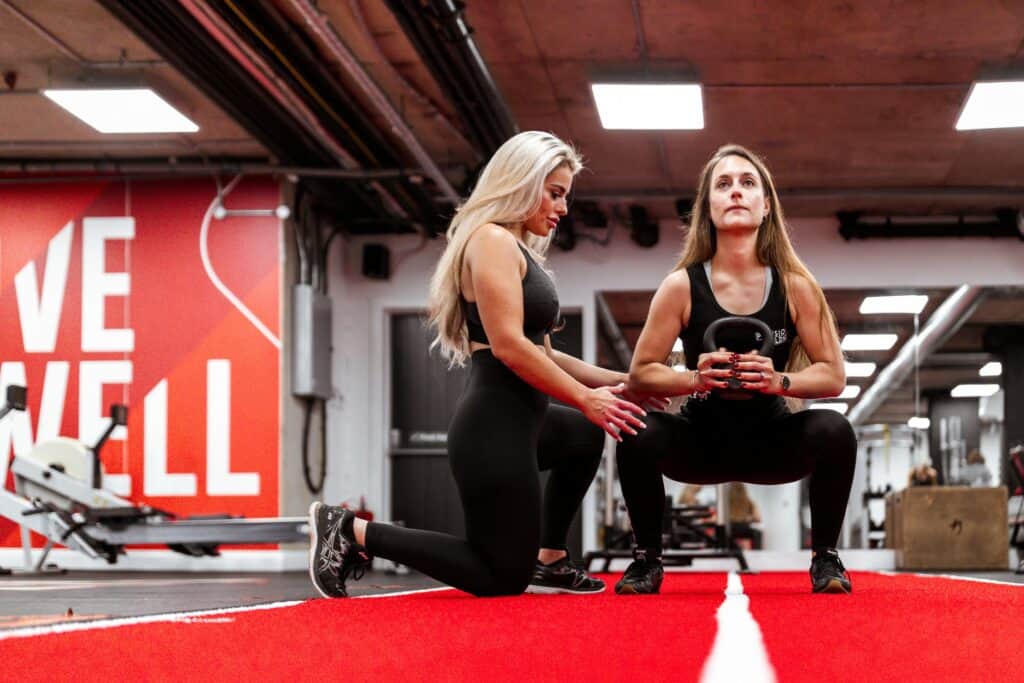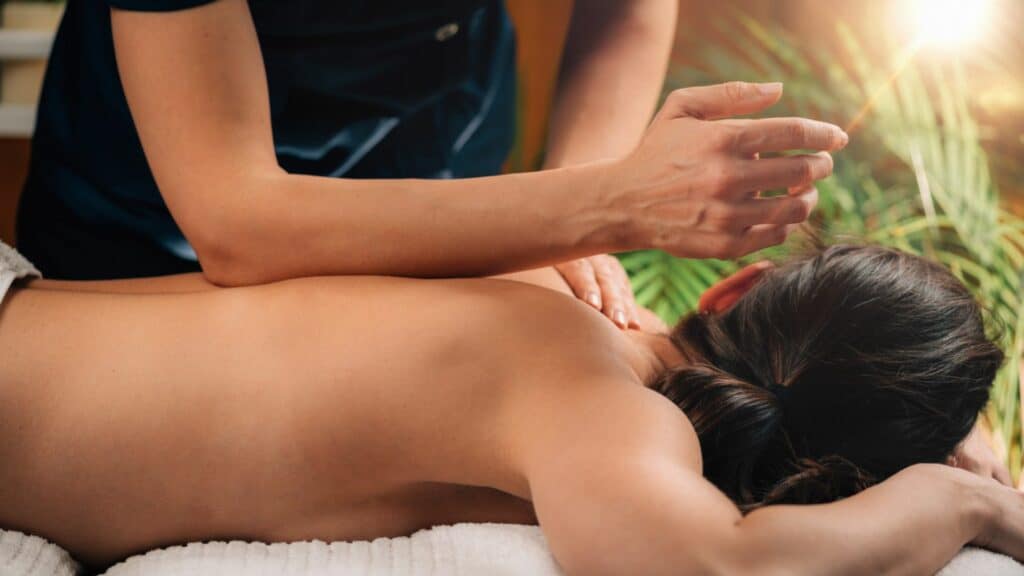Table of Contents
Main Takeaways
- Tailored therapy options: Choose sports massage for performance recovery or deep tissue massage for stress relief and general muscle tension.
- Technique-driven differences: While both use firm techniques, sports massage targets specific muscle groups related to movement, whereas deep tissue focuses on chronic tension and deep layers.
- Who it’s for: Sports massage suits active individuals or those with sports-related issues; deep tissue is ideal for anyone needing deep relaxation or long-term pain relief.
- Qualified care matters: Always check therapist credentials—look for experience, relevant diplomas, and clear specializations to ensure safe and effective treatment.
- Not just for athletes: Even office workers, busy parents, or anyone with stiffness can benefit from either massage—no athletic background required.
Do you need a sports massage or a deep tissue massage? You don’t need to be an athlete or sports fanatic to receive either! These two practices can relieve tension, soothe your muscles, and help you relax. All you have to do is choose the practice that will be best for you. And that’s where this guide steps in.
At One Body, we have a strong team of physiotherapists and massage therapists with specialisations and unique focuses. So, we can offer you both sports massage therapy and deep tissue massage. Here’s what you need to know about the difference.
Quick Comparison: Sports Massage Therapy vs Deep Tissue Massage
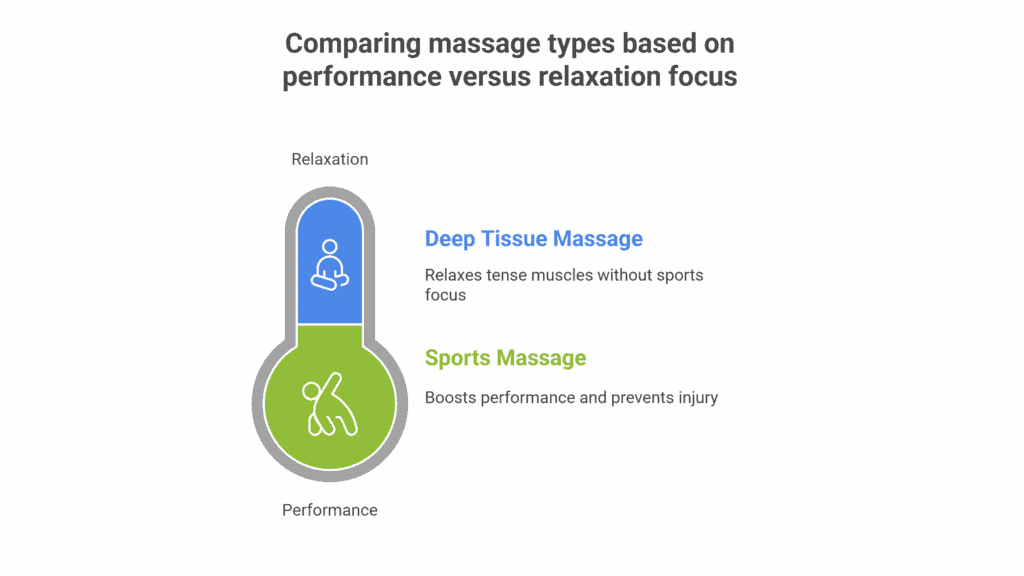
Sports massage often uses deep tissue massage techniques. Likewise, there’s nothing stopping a pro athlete from enjoying a deep tissue massage. The real difference between sports massage vs deep tissue massage is how the techniques are used.
- Sports Massage: This therapy focuses on injuries, tense muscles and performance. It is great for anyone leading an active lifestyle, whether they’re a serious weightlifter with shoulder pain or a 9-to-5 worker with stiff muscles. The techniques used are all about promoting blood flow to the muscles, repairing them, and returning you to peak performance for your sport (or just everyday movements).
- Deep Tissue Massage: Deep tissue massage also focuses on techniques that repair and soothe the muscles when they are tense, sore or injured. However, there isn’t a specific focus on sports injuries.
So, if you need a massage to boost your performance and prevent injury (at the gym or in everyday life), sports massage therapy will be perfect.
If you don’t have a sports or movement-related injury, and you are more interested in relaxing than boosting performance, then a professional deep tissue massage will really hit the spot!
Many clinics in London offer both deep tissue massage and sports massage – One Body included. To learn more about deep tissue massage, explore our Sports Massage Therapy page. Our experienced and professional therapists can adjust your session to provide the sports massage or deep tissue massage you need.
Sports Massage
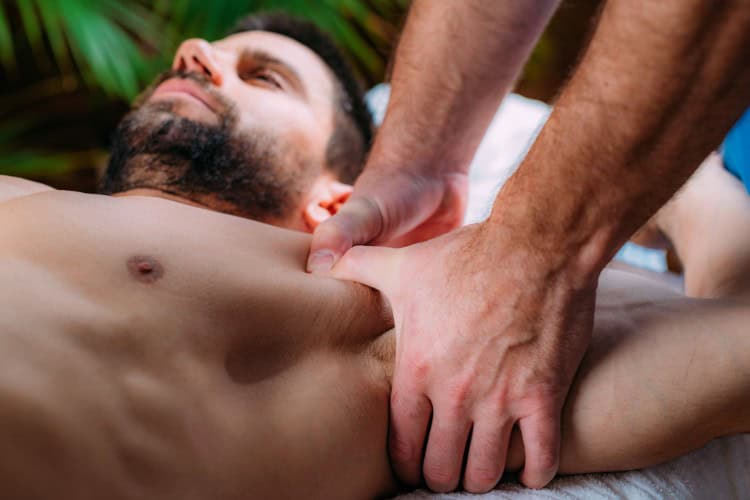
Let’s take a closer look at what sports massage entails and whether it’s the right choice for you.
Techniques
Some of the techniques used in sports massage therapy include:
- Effleurage: also known as stroking, this is a classic massage technique that stimulates and relaxes the muscles.
- Petrissage: squeezing and lifting away the muscles. It’s an intense feeling that promotes blood flow.
- Tapotement: rhythmically striking the muscles. This softens hard tissues and stimulates your reflexes, which is great after a workout or sports event.
We also use some techniques that will sound more familiar, like trigger point/knot release, wringing, and applying friction. What all these techniques have in common is that they’re quite firm and intense, targeting the muscles to promote blood flow, ease tension, and encourage recovery.
In a sports massage session, these techniques are used through the lens of sports. How can we ease the muscles you are actively using? How can we promote healing after a sports injury? How can we use these techniques to improve mobility, strength, stamina and your understanding of your strengths and weaknesses?
Any activity – whether it’s walking the dog or working a hard 9-to-5 – can lead to stiff and sore muscles that can be treated with sports massage therapy. Don’t be afraid to reach out to our therapists just because you aren’t a pro athlete!
Benefits
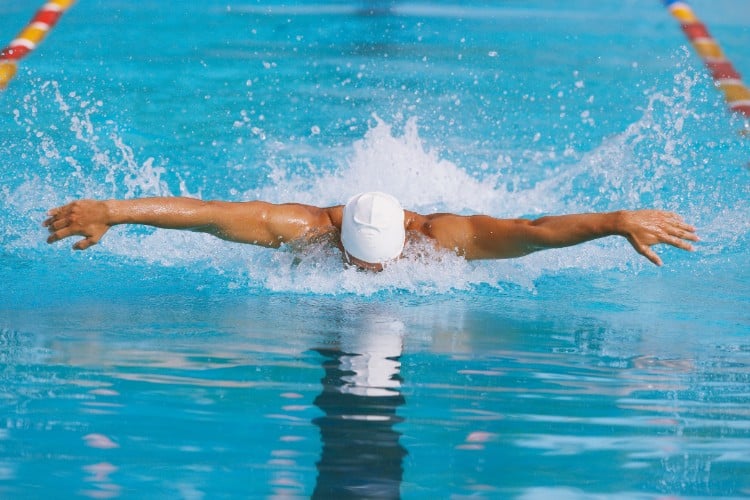
For an overview, here’s what you can expect:
- Prevent injuries: by promoting awareness of your body and improving flexibility and strength, you may be less likely to injure yourself.
- Improve recovery: stimulating blood flow relaxes the muscles and reduces inflammation, which can aid in your recovery and may even reduce your pain.
- Reduce DOMS: Delayed Onset Muscle Soreness can leave you feeling achy and sore a day or two after strenuous exercise, but there is some evidence that a sports massage can ease this.
- Increase flexibility: trigger point and knot release can help to loosen tight muscles, improving flexibility and range of motion.
- Improve performance: this is why many pro and amateur athletes like to incorporate regular sports massage sessions into their training schedule. Stimulating the muscles, improving recovery, and boosting your self-awareness of anatomy can help you operate at peak performance.
To reap the benefits, it’s important to choose a qualified sports massage therapist. This is especially true if you have a sports injury – a highly qualified therapist will adjust their practice to work around and heal your injury where possible.
Therapists
To be a sports massage therapist, practitioners need a diploma – level 3 is the basic option, with many of the best practitioners attaining levels 4 and 5. The highest level is equivalent to an undergraduate degree.
Compared to physiotherapists and sports therapists, a sports massage therapist has a lower level of education, but it’s still vitally important that you check their qualifications!
Additional qualifications and specialisations show that the therapist is continuing to update their education and stay current with the latest research and techniques.
You should also look at how much experience the therapist has. At One Body, our team of therapists have worked with athletes and have years of experience behind them. If a clinic website or therapist isn’t clear about qualifications and experience, this could be a red flag.
Deep Tissue Massage
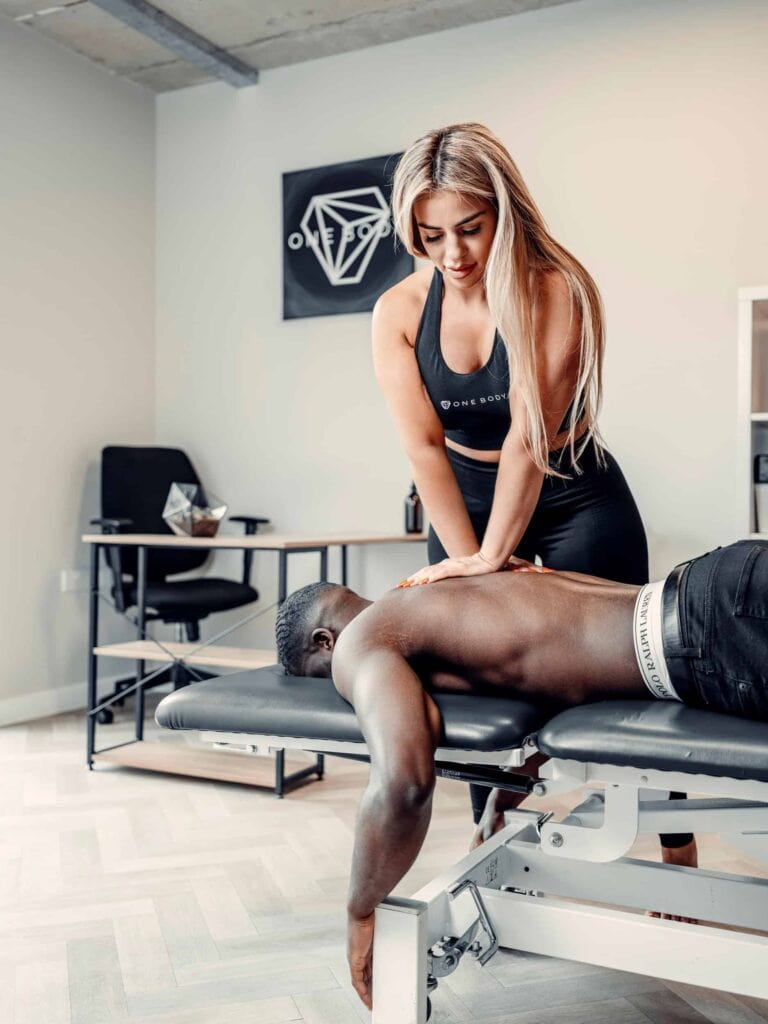
Deep tissue massage is a technique that may be utilised in a sports massage therapy session. But what exactly does deep tissue massage entail?
Techniques
Deep tissue massage techniques apply intense, deep pressure. It targets the deepest layers of muscles and tissues. The techniques listed above for sports massage therapy are often used here too. But there are some more specific techniques that you might encounter in a deep tissue massage session:
- Friction: applying cross-fibre friction goes “against the grain” and might feel uncomfortable but is great for healing tissue.
- Active release treatment: simply a hands-on assessment to diagnose and work out a treatment plan.
- Muscle energy – this technique stretches muscles to strengthen them and prevent or relax muscle cramps.
These techniques are applied with the hands, fingers, knuckles, and even the elbows and forearms!
Benefits

Although you can give and receive a massage at home, to get the benefits of a deep tissue massage, it is always best to seek out a professional.
- Scar tissue: Deep tissue massage can break up scar tissue, improving circulation and flexibility. It may also reduce pain.
- Reduce pain: whether targeting scar tissue, injuries or just tense muscles, deep tissue techniques can reduce long-term and ongoing pain.
- Relax the body: in addition to feeling physically relaxed, deep tissue massage can lower blood pressure by reducing chronic stress and tension.
- Treat muscle and tendon injuries: Deep tissue techniques are thought of as highly effective for muscle and tendon injuries in particular.
Therapists
A deep tissue massage therapist requires training – although it may not be as intensive as physiotherapy training or have as great a focus as sports massage therapy. To perform deep tissue massage, therapists must also be great communicators and able to put their patients at total ease. Relaxing fully and relieving tension is their job, after all!
Sports Massage vs Deep Tissue Massage vs Swedish Massage
Along with sports massage and deep tissue massage, many of our customers are also interested in Swedish-style massage. Swedish massage is a holistic treatment that uses softer strokes across the body to relax your muscles and improve circulation. It’s a great massage to get if you need to be mindful of injuries!
Thankfully, you can find highly qualified therapists who can perform all three styles (plus physiotherapy) in London. Just book a session at any of our One Body clinics. We can adapt our techniques and use our expertise to ensure your massage is perfect for your body and goals.
Let’s relieve your pain and get you back to peak performance. Book a sports massage session today.
Sports Massage vs Deep Tissue Massage FAQs
Do athletes need deep tissue massages?
An athlete can get a deep tissue massage to relax and stimulate their muscles. However, if the athlete has a sports injury or wants to focus on improving their performance for a specific sport, sports massage therapy is a better choice.
What’s the difference between soft tissue and deep tissue massage?
The main difference is the intensity and depth of tissue that’s manipulated. A soft tissue massage takes a gentler surface approach. Comparatively, a deep tissue massage uses stronger and more intense strokes to reach deep into the muscle – it’s said to “hurt in a good way”.
How do you know if you need a sports massage?
If you feel deep aches in your muscles after a workout or event, sports massage can be a pleasant way to recover. Anyone who feels sore or tense after activity (strenuous workouts or just a day spent on your feet) can also benefit from a sports massage. A sports injury can also be a reason to seek out a restorative massage.
How do you know if you need a deep tissue massage?
Aches, pains and stiffness that don’t easily go away – that’s a good sign that a deep tissue massage could work some wonders. The massage will relieve tension and relax the muscles to ease your pain.


